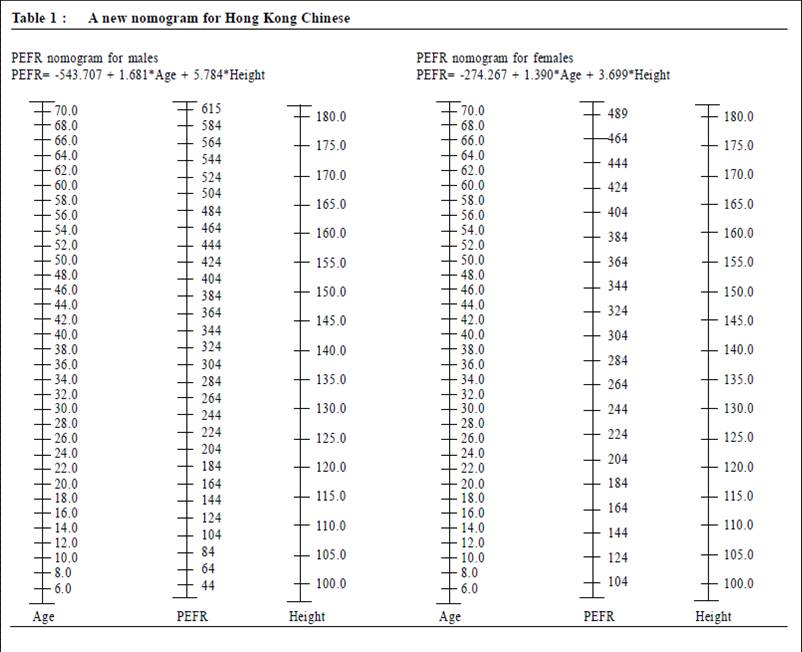
|
September 2009, Volume 31, No. 3
|
Letters to the Editor
|
A new reference PEFR nomogram for Hong Kong ChineseDear Editor, Peak Expiratory Flow Rate (PEFR) is an accepted screening and monitoring test for asthma patients.1 The subject was reviewed in an update article in the Hong Kong Practitioner recently.2 The current reference PEFR data for Hong Kong Chinese date back to the early 1980s3 and not in the current EA scale. The need to update reference values is of obvious reasons. Ip et al compared data from students in 1996 with those in 1985 and found a significant increase in height-adjusted forced vital capacity (FVC) and forced expiratory volume in one second ( FEV1). The authors speculated that exogenous factors might contribute significantly to the difference in lung function values and concluded the importance of re-examining the reference values for secular trends.4 Jones et al compared the established norms for the 20-year-olds with those of a group of university students. They found that the university students had much lower PEFR. The authors concluded that lung function not only differed across ethnic groups, but were also susceptible to change over a single generation within the same ethnic group.5 New reference data on lung function are thus needed. We have conducted a prospective cross-sectional survey to collect and analyze normal PEFR values for Hong Kong Chinese using the new EU standard peak flow meters. We collected data from community based primary care clinics and schools. The samples were Hong Kong Chinese residents aged 6 to 65 years without acute or chronic lower respiratory tract diseases. Using multivariate regression analysis, prediction equations for PEFR were formulated and nomograms for different genders were constructed. A total of 2945 subjects were measured; after applying exclusion criteria (mainly concurrent active respiratory disease), data for 2590 subjects were used for analysis. Of the 2590, 1696 were collected from community doctors and 894 were data collected from secondary and primary schools. We would like to report the best practical regression equation (with the largest adjusted R-square) and the updated nomogram here (Table 1). Best practical regression for male: PEFR (L/min) = -543.707 + 1.681*Age + 5.784*Height in cm Best practical regression for female: PEFR (L/min) = -274.267 + 1.390*Age + 3.699*Height in cm Acknowledgement The project was supported by The Hong Kong College of Family Physicians Research Award 2007-2008.
Sincerely,
M S H Chan, MPainMed, DFM, FHKCFP, FRACGP
Family Physician in Private Practice N M Wong, MBBS, DOM, FHKCFP, FRACGP Family Physician in Private Practice A Y F Kong, FRCP, FHKCFP, FRACGP, FHKAM Pediatrician in Private Practice Y T Wun, MD, FHKCFP, FRACGP, FHKAM Research Committee, HKCFP. T P Lam, PhD, MD, FRCP, FHKAM Associate Professor Family Medicine Unit, The University of Hong Kong. Wilson Tam, PhD School of Public Health, The University of Hong Kong.
References
|
|
